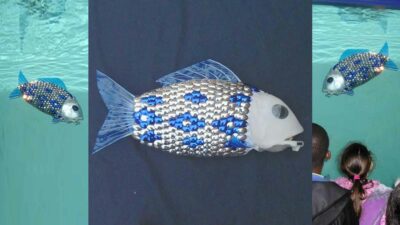Monitoring water pollution is a difficult task. Unless you have an eyewitness at the scene during a pollution event, most of the time you won’t know about the pollution until after it’s already occurred days, weeks or even months later. But the folks at the Robotics Department at the University of Essex might have a new solution. With the help of a European Union grant, they’ve developed a robot fish capable of testing water for oil spills, chemical waste, pollution contaminants, and even oxygen levels.
The new robot fish are the first of their kind and will be first deployed in Northern Spain near Gijon. Researchers are hopeful that the data from the fish will help provide critical information about pollution, the health of our water supply and help monitor global warming.
Watch out, polluters! This robot fish is patrolling our waters and is capable of testing for oil spills, chemical waste, pollution contaminants, and even oxygen levels. #WaterPollution #Pollution #Robotics Share on XTesting Robot Fish Prototypes At The London Aquarium
Starting in 2005, researchers have been testing small robot fish prototypes in a special tank at the London Aquarium. The robot fish tank at the aquarium has been a huge hit with visitors who marvel at the ability of the artificial fish to swim and move exactly like real fish.
This Is One Hi-Tech Fish!
After the test phase, a larger 5 foot long model of the swimming robot fish will get released into the wild. To help the fish manage water pressure and currents, the final model of the fish needed to be much larger than the prototype. Researchers have also given the robotic fish a sophisticated guidance system to help keep them from bumping into other fish, boats and other obstacles. And if something does go wrong or when the fish needs to send data, it can communicate with researchers via a wireless signal.
Although not extremely fast, at a swimming speed of 1 meter per second, the robot fish move almost exactly like real fish. Great care was put into mimicking real fish movement that has been perfected through millions of years of evolution. This efficiency in movement will help extend battery life and enable the fish to collect more data. When the fish’s battery gets low, it will automatically navigate back to a recharging station.
Manufacturing costs for the robot fish is estimated to be about $28,000 each. You can read more about the robotic fish at Inhabitat.
Related Articles:
- Incredible Robotic Innovations (That Will Be A Part Of Your Future)
- TV and Movie Robots That You Can Either Buy Or Make Yourself
- Spice Up Your Love Life With The Terminator Kama Sutra
- First Non-Human Rings NASDAQ Closing Bell

Frank Wilson is a retired teacher with over 30 years of combined experience in the education, small business technology, and real estate business. He now blogs as a hobby and spends most days tinkering with old computers. Wilson is passionate about tech, enjoys fishing, and loves drinking beer.























Leave a Reply
You must be logged in to post a comment.